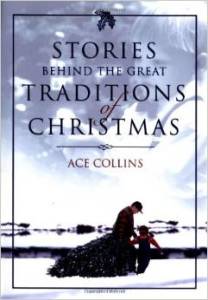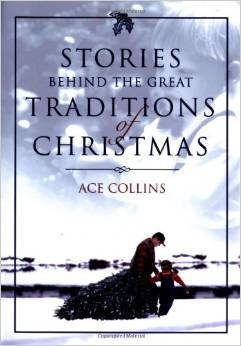 The other day I was pondering the traditions of Christmas—such as Santa Claus and Christmas stockings. How did the birth of Jesus morph into these seemingly disconnected symbols? Of course, I knew Santa Claus was also known as St. Nicholas and he was canonized a saint (by whomever claims such authority) because of his generous acts. But there are many Christians today who won’t have anything to do with Santa Claus as they believe acknowledgment of him to be sacrilegious.
The other day I was pondering the traditions of Christmas—such as Santa Claus and Christmas stockings. How did the birth of Jesus morph into these seemingly disconnected symbols? Of course, I knew Santa Claus was also known as St. Nicholas and he was canonized a saint (by whomever claims such authority) because of his generous acts. But there are many Christians today who won’t have anything to do with Santa Claus as they believe acknowledgment of him to be sacrilegious.
Then I remembered years ago my husband purchased a boxed set of paperbacks by Ace Collins—Stories Behind the Best-Loved Songs of Christmas, More Stories Behind the Best-loved Songs of Christmas (neither of which helped me in my quest for answers) and Stories Behind the Great Traditions of Christmas. Pay dirt!
What I discovered is a myriad of stories that have led to our rendition of Santa Claus today. The first St. Nicholas was actually St. Nicholas of Bari, whose wealthy parents died when he was fairly young. He was born in the fourth century in the town of Patara, Lycia (now part of Turkey.) According to legend, he distributed his parents’ money to those in need in his hometown. According to historical records, he felt called to Christian service and became a monk at the age of seventeen and an archbishop by his early twenties. He was considered wise well past his years, saved many lives, was a powerful prayer warrior and had the ability to heal the sick. Yet more impacting to those who knew him was his incredible generous spirit which led him to the mythical legend of Santa Claus.
The date of his death, December 6th, in the late 340’s or early 350’s, was a day of great sadness for those in ancient Asia Minor. But he wasn’t forgotten. On the anniversary of his death, his life was commemorated by a feast. The eve of this anniversary, children would set out food for Nicholas and straw for his donkey. Those “obedient” children would awaken to find their gifts to St. Nicholas replaced with sweets and toys. St. Nicholas Day is still observed in many European countries. On this day, gifts are exchanged in honor of the spirit of faith, hope and charity that he embodied.
What has this to do with the birth of our Savior? Nothing. However, due to the close proximity of St. Nicholas Day to Christmas, the traditions of this day merged with Christmas celebrations. There is so much more to the history of St. Nicholas and how he survived pagan roots and banning from the Puritans to land on American soil. If you feel a need to know more, you can purchase the book by clicking here.
I’ll do a little more digging into the Christmas traditions, and God willing, share what I learn in the next couple weeks.
God bless.







Comments 1
That is really interesting. It’s nice to get a bit of the history behind Santa Claus.